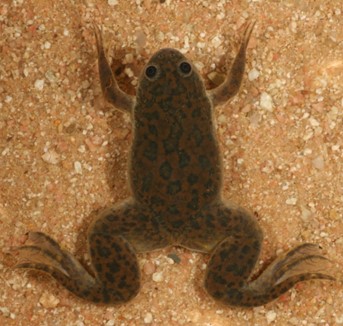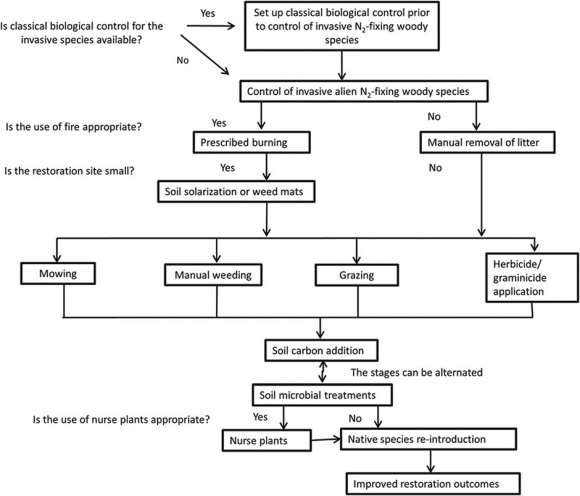
(Photo credit: Zama Mahlobo-Nsikani)
The growth of our native Sugarbush (Protea repens) is not negatively affected by the legacy of altered soil chemistry after the clearing of invasive Port Jackson (Acacia saligna). This was the finding of a recent study by C·I·B PhD student, Mlungele Nsikani, and C·I·B researchers, Brian van Wilgen, Sven Bacher and Mirijam Gaertner. The study, which addressed the key problem of legacy effects facing restoration of fynbos after Acacia invasions, was published in the South African Journal of Botany.
Port Jackson is a nitrogen-fixing tree that often has negative ecological impacts such as changing the soil chemistry and microbial communities of an area that it invades. It is common to assume that such negative impacts of invasive alien plant species will decline immediately after their removal. However, this is not the case because the invasive species can leave legacy effects in the soil. Legacy effects include measurable changes in biological, soil chemical or physical conditions that persist after clearing the invasive species. Soil legacy effects such as elevated nitrogen in the soil can facilitate the dominance of alien and/or native nitrogen loving plant species in previously invaded areas.
In their study, Mlungele and colleagues collected soil from cleared areas (2, 6 and 10 years after clearing) that have altered soil chemistry due to invasion by Port Jackson, and areas with native soil chemistry that had never been invaded. They grew Sugarbush using the soil in a greenhouse. To test the effect of changes to soil microbial communities due to invasion by Port Jackson on the re-establishment of Sugarbush, they sterilized half the soil from each area to remove soil microbial communities. Furthermore, they sowed Common veld grass (Ehrharta calycina), a native nitrogen loving weedy species, into half the number of trays with sterilized or non-sterilized soil from each cleared or non-invaded area, to test its effect on the re-establishment of Sugarbush.
Mlungele and colleagues found that the legacy of altered soil chemistry after the clearing of Port Jackson does not have negative impacts on the re-establishment of Sugarbush. They concluded that restoration efforts do not always have to intervene through the application of soil treatments (e.g. soil carbon addition) to restore native soil chemistry after clearing Port Jackson. Furthermore, Mlungele and colleagues found that while the soil microbial communities after clearing Port Jackson have a positive effect on the germination of Sugarbush, the legacy of altered soil microbial communities could have negative impacts on its growth. Moreover, the presence of nitrogen loving weedy species could also limit the growth of Sugarbush.
“Restoration programs need to take into account altered soil microbial communities and nitrophilic weedy species, if we are to entertain any hope of success in restoring native plant communities in previously invaded areas,” said Mlungele.



